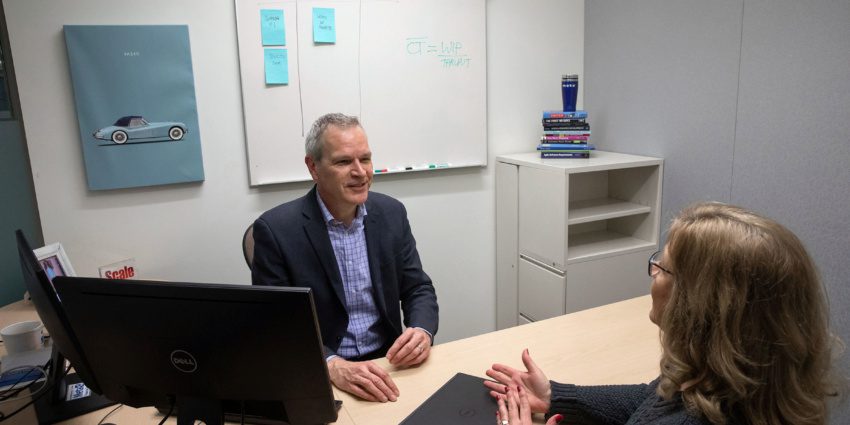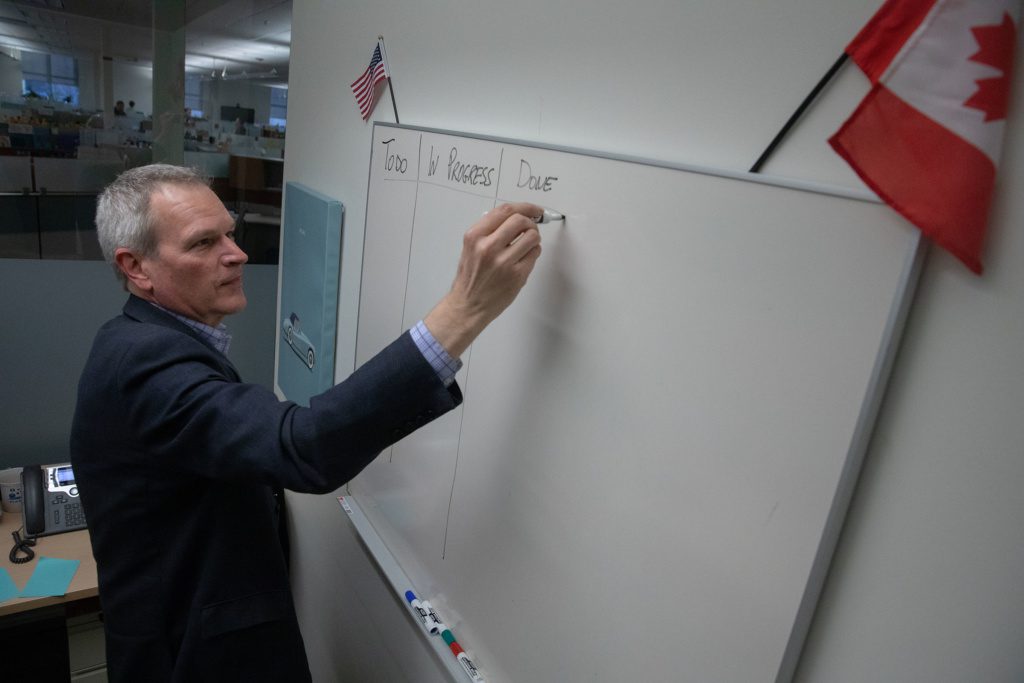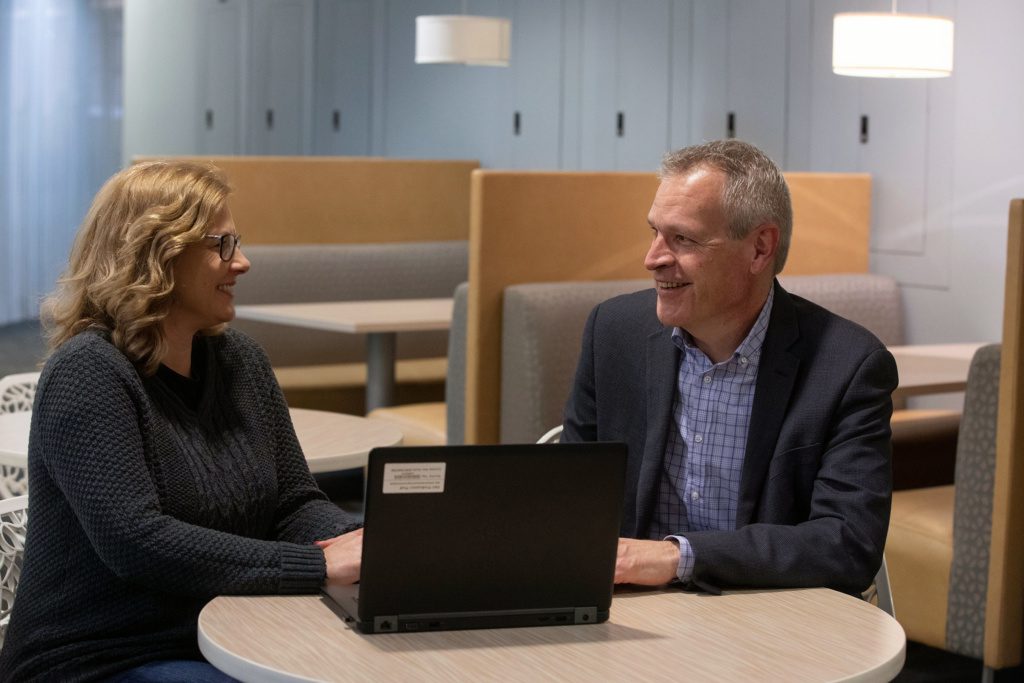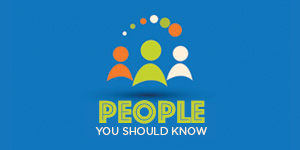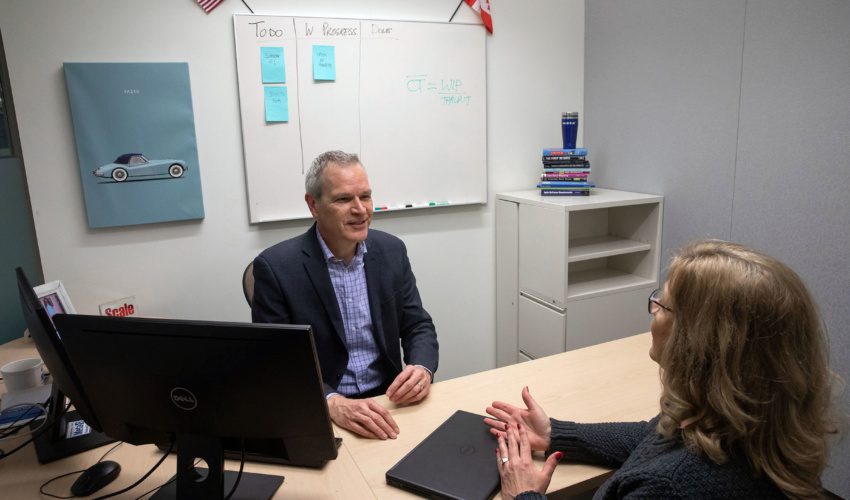Transformation leader: Meta executive helps bring agility to fintech company
Jan. 29, 2019
This paid piece is sponsored by MetaBank.
A quick glimpse around Randy Wilk’s office and you’re left with a sense of being a little transported.
There are two small flags placed above his desk: the Canadian flag, a nod to his native country, and the American flag, which represents the citizenship he earned in 2018.
“I’m a proud new American,” said Wilk, who moved to Sioux Falls about a year ago after spending the past six years in Florida.
That’s present in his office, too, from the tropical photo on his desktop background to the Jaguar convertible pictured above his seat.
But while climates and cultures have changed during his life, his mission at MetaBank in Sioux Falls can be summed up by a seemingly universal truth: Work often expands or contracts based on the time allowed for its completion.
Along with leading a team of approximately 120 in software development and delivery as senior vice president and chief information systems development officer, Wilk is the head of Meta’s agile transformation – an effort to change the way work is completed companywide.
“Agile is a philosophy,” Wilk said. “It encourages teamwork, self-organization and accountability.”
Wilk has started by implementing specific agile frameworks for software development.
“If you think about your old-school software development project, you document all your requirements up front and do all your development and testing, and nobody actually sees anything,” he said.
“None of the stakeholders see results until the very end. That’s the first opportunity to get it right.”
With an agile process, “instead of doing things in big, monolithic phases, you’re doing those same phases in a very short timebox period.”
Teams look at all projects that need to be done and rank them by business value and risk. Starting at the very top of the list, they tackle projects in two-week delivery increments.
“We work on one little slice and get it right,” Wilk said. “Then, we’ll add more and continue to build it out. It’s being leaner and more focused on delivering working software instead of documentation. The goal is to deliver faster. And if you’re falling behind, it gets exposed earlier.”
If it sounds similar to lean methods in manufacturing, it should. Tech companies borrowed many of its efficient approaches from manufacturing, and there are common elements of continuous improvement, limiting work in progress and just-in-time delivery included in an agile transformation.
It’s the same approach taken by software industry leaders such as Microsoft. “They’ve been doing it for a while,” Wilk said.
And Meta also was moving in that direction before his arrival. Wilk, who led an agile transformation at another fintech company in his previous role, saw an opportunity to come in and deliver additional value.
“They were on their way, and there were elements of agile processes that were already here,” he said. “What we’re working on is really standardizing and institutionalizing it and bringing in the rest of the organization.”
The biggest challenge with an agile transformation isn’t inventing processes, he added.
“It’s getting people to adopt new behaviors and new ways of thinking and new values. Some take to it right away because you get to see more things getting done.”
Teamwork oriented
A framework for agile processes is known as Scrum. Named for a method of restarting play in rugby, it evokes how “the goal in rugby is for the team to surround the ball in the scrum and move it down the field.”
Being successful in an agile approach to work demands collaboration, Wilk said.
“A behavior we’re really trying to eliminate is the notion of what is or is not someone’s role,” he said. “We’re focused on teamwork. It doesn’t matter if you’re a software engineer or tester, your role as a team member is to get things delivered.”
Meta has seen powerful examples of it already, he said.
“We’ve seen developers doing tests, testers writing or reviewing code, people taking on various roles to get the work done that’s needed. Most people are goal-oriented and more than willing to step up and do what they need to get the job done.”
Meta started its intentional agile transformation about six months ago, and the effect has been noticeable already, Wilk said.
“In just a few months, we’ve seen real increases in overall productivity, throughput and engagement,” he said.
As transformation evolves, processes and projects become more predictable and transparent, while time to market and quality improve, Wilk said.
“In my last organization, after 18 months, on average we were delivering software projects in one-third of the time,” he said.
“So it can be a dramatic change. I think at Meta there were already agile elements here, but we can keep improving. At the end of the day, it’s about delivering for the business but also trying to improve the work experience for everyone on the team. We want to eliminate silos and provide more opportunities to cross roles or work on something different.”
Organizations that embrace an agile approach often find it helps attract workers, he added.
“It’s attractive to skilled workers. They don’t want to get boxed in, and this gives an opportunity to work on multiple types of tasks and expand their skills while helping the team meet its commitments.”
As for his new home and his new employer, Wilk has a lot of good things to say about both. Sioux Falls has treated him well, he said.
“I mean this in the nicest way: It feels a little Canadian,” he said. “People are nice. It’s safe. It’s a good size, and it feels quite familiar and comfortable.”
And he sees nothing but opportunity at his new company, Meta.
“I like it a lot. It’s a very exciting company,” he said. “Things are constantly changing for the better. It’s a company that’s really committing to continuing to grow and improve, and I find it quite progressive in that way.”

